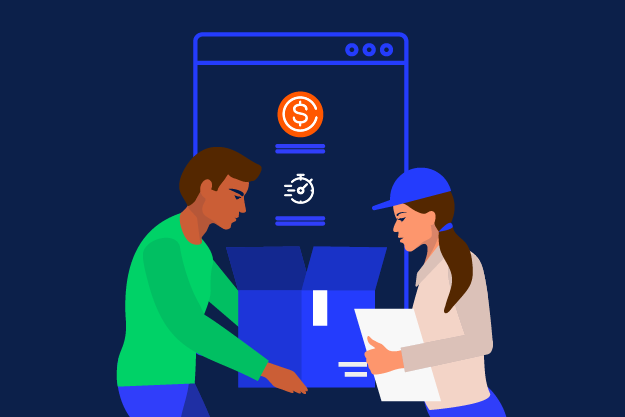How can you overcome the consumer crunch?
Economic uncertainty is going nowhere any time soon, and consumers are feeling the crunch. Buyers will, over time, adapt to the current financial outlook, but what about your business and its supply chains?
How do you maintain strong profit margins without compromising on customer care?
To steer you in the right direction, Metapack has surveyed over 8,000 households from the UK, USA, Canada, Australia, Germany, Italy, France, and Spain. Our Ecommerce Delivery Benchmark Report with Retail Economics bridges the gap between retailers and their customers, giving you the chance to leap ahead of 2023’s most significant challenges.
By equipping businesses with masses of free consumer data, retailers can tackle the concerns at the heart of consumers’ minds.
A seemingly everlasting cost-of-living crisis is weighing heavy on everyone, with people and businesses feeling it. Getting granular with business costs and measuring them against the most critical aspects of the customer experience is the answer.
So, let’s start with what makes a customer experience great in 2023.
The ecommerce trends 2023 landscape
Retailers can succeed in the current economic downturn if they take the time to reset their understanding of what customers expect from online retail. Our data sheds light on incoming ecommerce trends.
Across all major markets included in the research, 4 in 5 (84%) consumers are concerned about the outlook for the economy and their personal finances over the year ahead, with inflation the top concern.
Small retail enterprises, many of whom still feel optimistic about the ecommerce landscape in 2023, do not necessarily share these concerns. Surprisingly, more retailers are confident about the economy than not, with only 20% expecting reduced consumer demand this year.
Their optimism might not be misplaced. The underlying resilience of the labour market and extra household savings prompted by the pandemic might soften the impact of a recession this year for some. For most, however, the sense of doom and gloom will weigh heavy on disposable incomes.
So, what does the data tell us?
- 24% of customers intend to spend more money online in 2023 than they did in 2022
- 52% of less affluent consumers will only buy non-food products when essential
- Buyers in the UK are experiencing the most economic stress
Nearly one in four individuals are increasing their online shopping, though, despite almost four out of five people worrying about the economy.
Many retailers invested in their online services during the pandemic, and any potential recession is expected to shallow compared to others we’ve experienced. More than ever, online retailers are well-positioned to combat a volatile economy with careful focus.
Important purchasing patterns
Speaking of focus, did you know, for instance, that 62% of consumers will be concerned about the economy and their personal finances in 2023?
Your business needs to account for trending concerns, adapting to the fact that purchasing might become more of a necessity than a luxury for customers.
57% of survey respondents are most concerned about rising food, fuel, and energy prices. 40% of shoppers are adopting a “no frills” mindset, only buying non-food products when required; 22% will shop less frequently and 10% will look for cheaper brands or shops.
As consumers continue to shift to online purchasing, the expectation placed on online retailers is rising. Many online shops may suffer with client retention this year if they cannot match the elevated expectations of potential buyers, which range from refusing shipping costs to anticipating free returns.
Prepare your business with refreshed policies
Retailers should consistently provide the best customer service possible if they want to generate repeat business. That fact hasn’t changed.
Transparency is a crucial component of the consumer experience that is frequently ignored, and households have made it clear how important it is to understand how things work, particularly regarding delivery and returns.
According to our report, 76% of customers think refunds should always be free. Cost is the most important factor in delivery for 31% of potential customers when they order online. A flexible returns policy is the top delivery consideration for online buyers, according to 10% of respondents.
Ultimately, this will lead to conflict between customers and some brands as retailers and merchants try to recover costs wherever they can, and delivery fees must be evaluated thoroughly.
As customers can return any purchases for no financial consequence, the practice of free returns in ecommerce has generated the illusion that sales are risk-free rather than being final decisions. Many buyers are resistant to the adjustments being made by online retailers – any excess fees should be carefully considered.
Eco-friendly retail is also on minds, as the number of people influenced by sustainable delivery options has risen since 2022.
The general attitude of consumers regarding green delivery is warming. Most respondents to our survey indicated that they valued environmentally friendly solutions, such as out-of-home deliveries and longer delivery times or higher charges to reduce emissions.
With an increase year over year, 26% of customers anticipate using second-hand markets or buying used goods in 2023. In 2023 compared to 2022, more consumers will regard green delivery as the most crucial factor in delivery decisions. Shoppers would consider out-of-home delivery in 34% of cases and green delivery choices in 79% of cases.
Right now, retailers aren’t fully committed to green deliveries. Although 75% of business owners understand the value of sustainability and minimising their environmental effects, less than a fifth will make it a top priority for their company in 2023.
Get ahead of the curve
The time has come to strengthen your business with essential knowledge of your target consumers’ nuanced expectations. Our comprehensive report will be a critical component of your toolset as you prepare to weather the ongoing economic turbulence.
Download Metapack’s report for extensive insights into the retail landscape this year.

